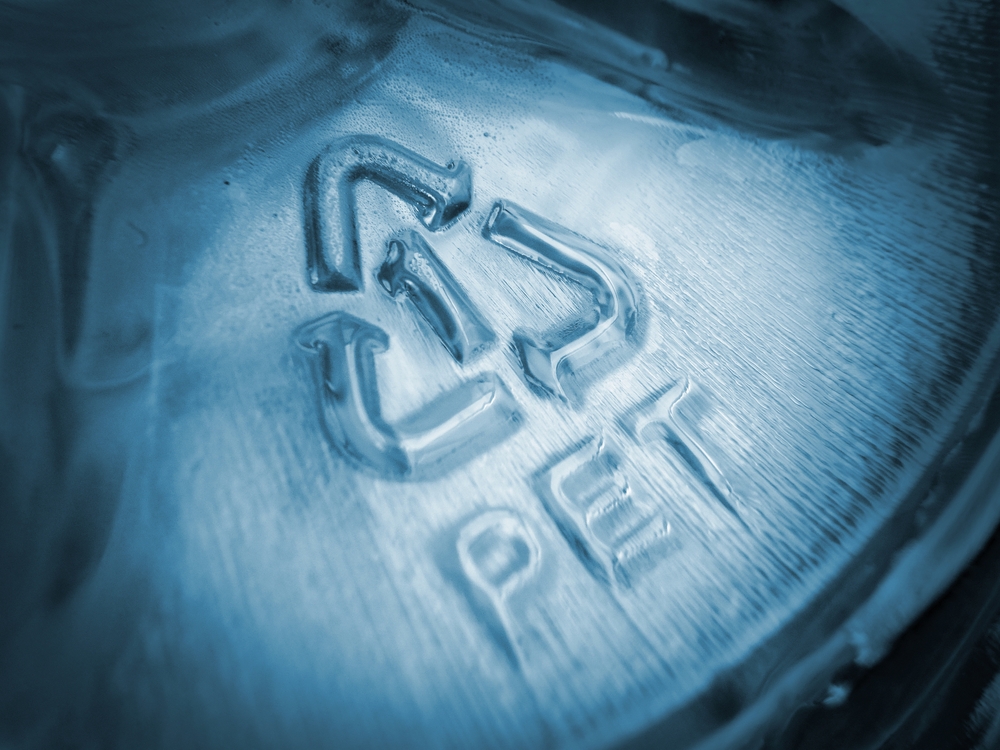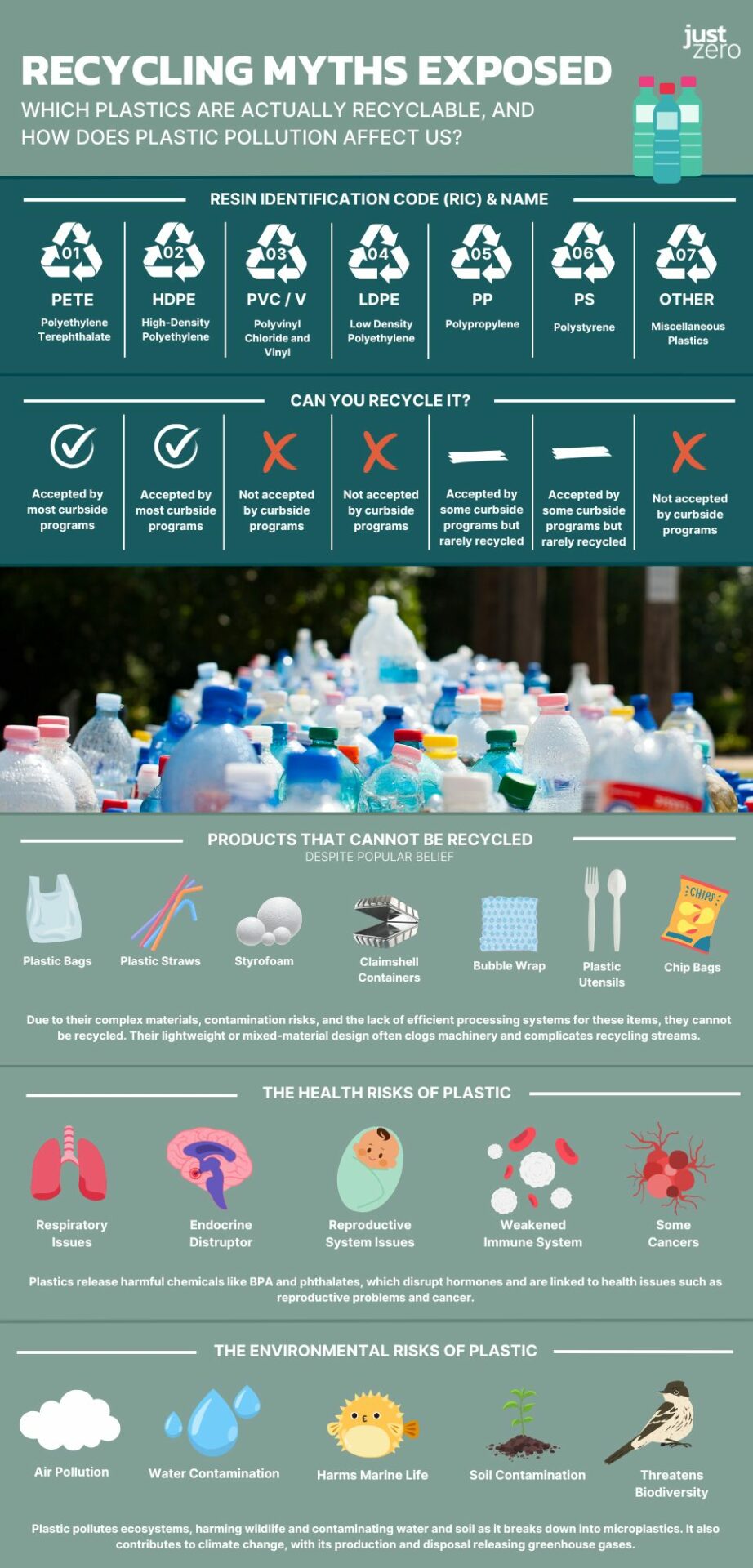
Recycling May Not Lead to What You Think
Amidst the doom and gloom of the climate crisis, one thing many Americans take comfort in is recycling. Recycling provides us with a sense of power over a problem that feels out of our control. Our strong desire to recycle is a testament to how widely recognized the chasing arrows symbol is. In fact, a majority of Americans believe that any product or packaging with the chasing arrows symbol is recyclable.
But not all materials are equal when it comes to actual recyclability. This is especially true for plastics. Many companies that advertise plastic products and packaging as recyclable deceive well intentioned customers. Because, while plastic products and packaging may be labeled as recyclable, only 5-6% of plastics in the United States actually get recycled each year. This form of deception, known as “greenwashing,” allows companies to mislead customers about the environmental impact of their products. Some companies also use this tactic to market alternatives to single-use plastics as “compostable,” when often they are not. To stop companies from deceiving us, we need stronger federal labeling laws.
History of the Chasing Arrows Symbol
In 1970, an architecture student, Gary Anderson, created the now-iconic recycling symbol – a triangle of chasing, folded arrows – as part of a contest. The design won, and the contest organizers placed the symbol in the public domain with the hopes of spreading awareness about the benefits of recycling.
As recycling became more popular throughout the U.S., communities set up curbside collection programs. The chasing arrows symbol helped people identify which materials they could place in these bins. While the symbol worked well to illustrate the recyclability of things like paper, cardboard, glass, and aluminum, the same could not be said for plastics.
Plastics and Recycling – A Toxic Relationship
Plastics are a uniquely difficult material to recycle. One reason is because plastic is not a single material. “Plastic” refers to a range of human-made substances derived from fossil fuels like gas, oil, and coal. Manufacturers often often enhance these substances with a variety of chemicals. When it comes to recycling, different types of plastics need to be sorted and processed in different ways. This means you cannot recycle a water bottle made from one type of plastic alongside a shampoo bottle made from another type. But even the same types of plastics can’t always be recycled together. It depends on how they are shaped or colored. Sorting and separating plastics are costly for recycling facilities and if the wrong plastic gets through, it can wreak havoc on the recycling facility.
What’s worse, some products and packaging contain multiple types of plastic, making them impossible to recycle. And when unrecyclable materials are grouped together with recyclable materials, the whole batch becomes “contaminated” – causing all of the materials to be dumped in a landfill or burned in an incinerator. As a result, creating products and packaging with recycled plastic is more expensive than generating new plastic.

How The Plastic Industry Corrupted the Chasing Arrows Symbol
In the early days of recycling, aluminum cans, glass, cardboard, and paper were the only materials collected. The plastics industry itself knew that recycling plastic was effectively impossible. But to stay in American homes and survive the 1980s movement to ban single-use plastics, the industry needed to convince the public that plastic was recyclable.
As part of this mission, the plastics industry developed the Resin Identification Code (RIC) in 1988. Under this coding system. depending on the chemical make-up of plastic used, a product will typically receive an assigned number label (1 through 7). The code implies that, if plastics are sorted and grouped together with the same resin number, they are recyclable. But it ignores the fact that recycling plants can’t actually recycle most plastics. Why? Because recycling plastic is financially unfeasible. In fact, most plants that recycle plastic can only recycle resin types 1 and 2.
Problematically, the resin number is located inside the chasing arrows symbol. And that’s not a coincidence. To sell the lie, the plastic industry lobbied state lawmakers to mandate that resin numbers appear within the chasing arrows symbol on all plastic products. This labeling is currently required in 36 states.
Ultimately, this labeling system has only led to confusion among customers. But because of our relaxed federal labeling laws and guidelines, companies continue to utilize this labeling system, no matter the reality of recyclability.
Rise of Compostable Products
Unfortunately, the practice of mislabeling is creeping into another tagline – “compostable.” Materials that are compostable include things like food scraps, leaves, grass clippings etc. These organic materials can be broken down and turned into “compost,” which, if added to soil, enriches the health of plants and crops.
In response to growing concerns over single-use plastics, companies have turned to so-called “compostable” bioplastics. You may recognize these products. They include earthy-looking fiber bowls, utensils made of cornstarch, clear biodegradable cups, and pale-green biodegradable garbage bags. But many of these products do not actually break down the way traditional compostable materials do. In fact, bioplastics can only break down in very specialized circumstances, which compost facilities can’t recreate.

Even worse, some compostable products may be developed with chemicals whose environmental impact is less known and in some cases, more harmful than conventional plastics. Placing these materials in composting facilities also makes it more difficult for compost companies to make good quality compost. Yet, there are no federally mandated guidelines defining what can be labeled as compostable. And companies choose to take advantage of this lack of oversight when marketing their products.
Because many of these so-called “compostable” products are designed to act and look like traditional plastics, customers often try to recycle them. Since these products are not recyclable, they can clog recycling machines, making it difficult to recycle truly recyclable materials.
Keep Businesses Accountable
Right now, customers are burdened with determining what is recyclable or compostable. It is on us to identify which products have greenwashed labels and which products our local recycling and compost programs can accept. This is hard! Although many of us have come to trust labels, like the chasing arrows symbol, we can’t always trust what companies tell us – especially when it comes to plastics. So, what’s the solution? Federal labeling standards.
The Federal Trade Commission’s Green Guides
The U.S. Federal Trade Commission (FTC) is an agency that aims to protect customers from unfair business practices. As part of this work, the FTC provides guidance to companies seeking to market their products as recyclable or eco-friendly. This guidance is known as the “Green Guides.” Unfortunately, these guides have not been updated since 2012. As a result, they no longer reflect current industry practices or customers’ increasing interest in making environmentally conscious choices. Fortunately, the FTC is working to update these guides and will hopefully incorporate comments and concerns that environmental advocates and organizations, like Just Zero, shared with the agency.
Federal Truth in Labeling Law
States like California and Washington are providing examples of how our government can remove the burden on customers when it comes to identifying what is recyclable or compostable. These laws are known as “truth in labeling” laws. A federal truth in labeling law would create a unified standard across state lines. This would provide clarity and consistency for both customers and producers. Senator Jeff Merkley of Oregon is currently working with industry and environmental groups on drafting a truth in labeling law that may create this much needed national labeling standard. For this law to be effective, it must focus on protecting and informing consumers. The responsibility must shift to producers to prove that their products and packaging is actually recyclable or compostable.
Just Zero works to put truth back in the hands of customers when it comes to recyclability. If you’re interested in this issue, join us as we advocate for stronger labeling laws to fight against deception and greenwashing.